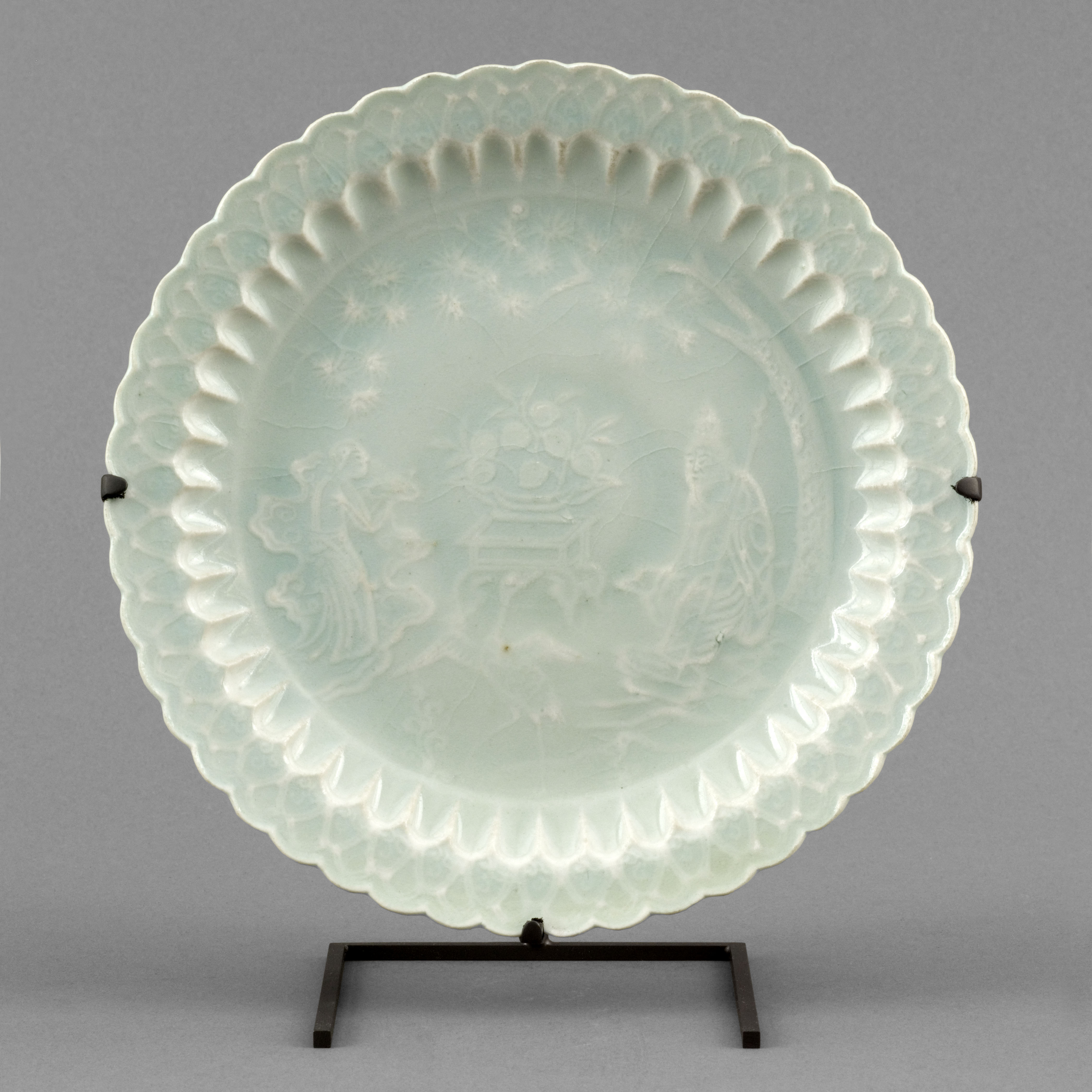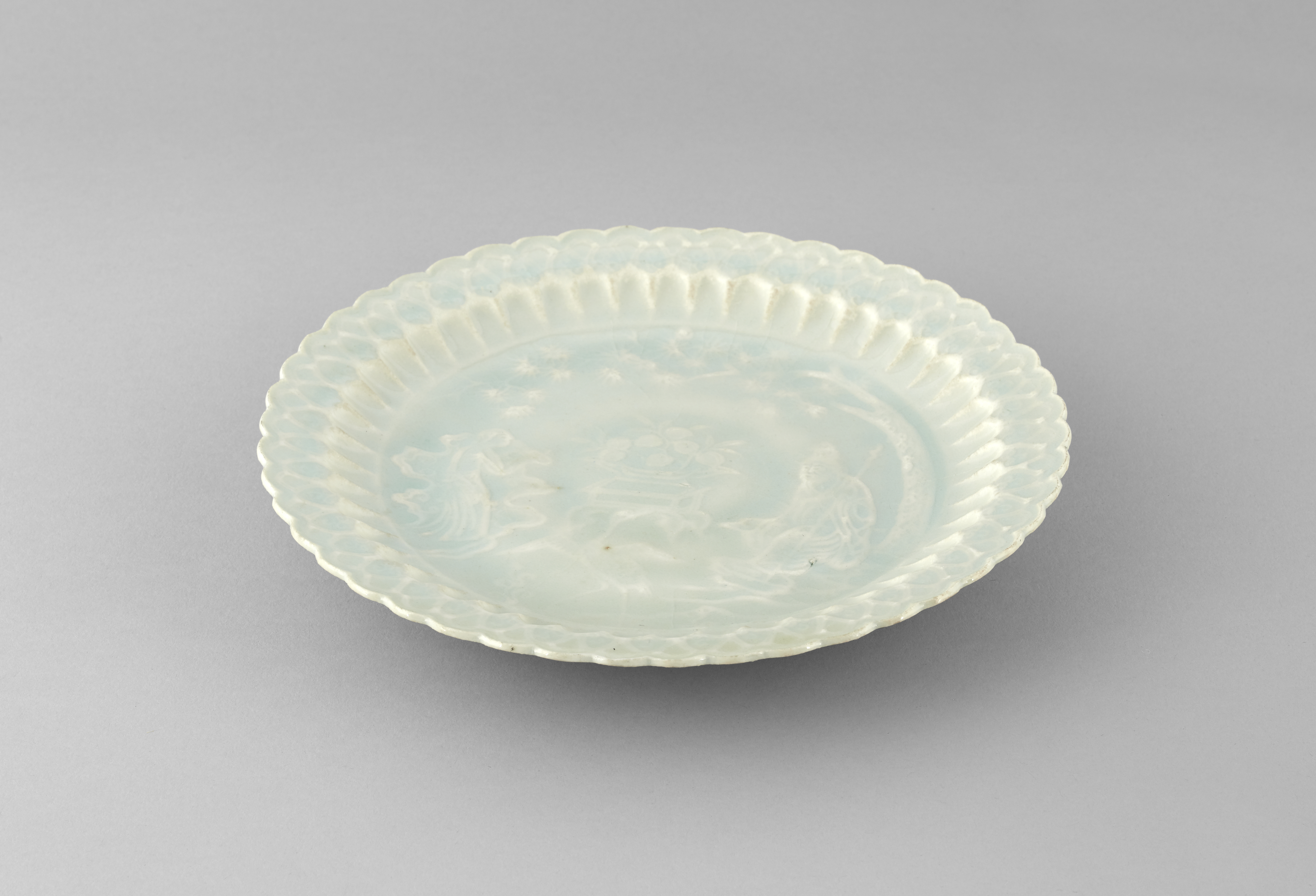
Plat
Porcelaine, Moulage, Décor moulé (céramique), Couverte qingbai
Vaisselle et ustensile de cuisine, Service de table, Récipient (vaisselle), Plat
Don manuel : Fondation Antoni Laurent; Société des Amis du musée Cernuschi
M.C. 9931
This dish stands on a circular foot. The porcelain body, transparent in places, is thin, white and of fine texture. It has a transparent, brilliant blue glaze. Only the base is unglazed. On the base there is a rust-coloured mark left by a circular stand. The decoration was made with a mould. It is composed of deep lobes around the outer wall of the dish and the cavetto. The lobed rim is adorned with a double row of petals bordered by two fillets. Those in the inner band are marked with three small circles. In its general shape and treatment of the details, this piece evokes metalwork. It is very similar, for example, to a lobed silver dish from a Song cache discovered in Pingqiao in the Piaoyang district in Jiangsu. It was probably a popular design at the time, because it is also found in white porcelain from the Jin empire (1125-1234).
The central medallion depicts a landscape scene. On the right, and old man is sitting under a pine tree, leaning on a long stick. To the left, his young servant presents an object to him with two hands; between them dances a crane. The background is occupied on the left by a rock in Lake Tai, deeply hollowed, and in the centre by a low table on which stands a tray of peaches. The crane, the peaches and the pine tree identify the old man as an Immortal. Scenes of this kind are common in the Song period, particularly on mirrors, and similar mirrors from the same period are found in territories controlled by the Jin.
Gilles Béguin, Activités du musée Cernuschi, Arts asiatiques, 1997, t.51, p.132-133
Gilles Béguin, Activités du musée Cernuschi, Arts asiatiques, 2000 , t.55, p.140-141, 206


